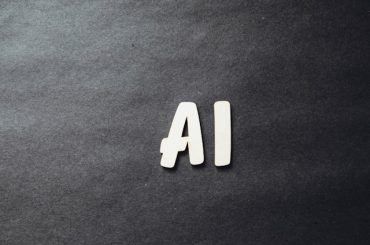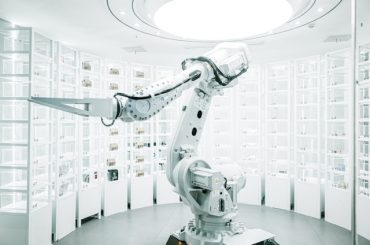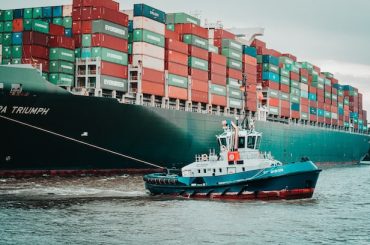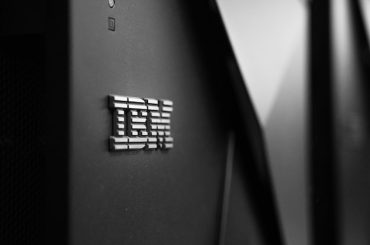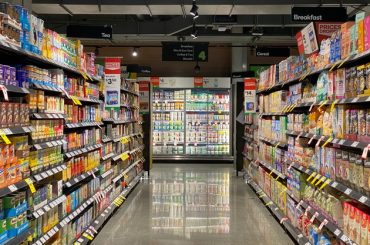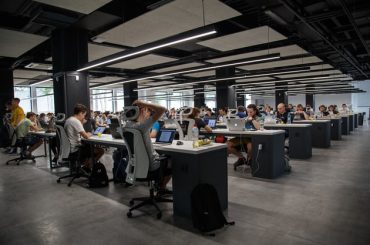Integrating Artificial Intelligence (AI) is an incremental improvement and a revolutionary shift in the dynamic manufacturing world. Over the past decade, AI has transitioned from a futuristic concept to a practical tool reshaping industries.
Traditionally characterized by its reliance on human expertise and manual processes, the manufacturing sector is now embracing AI to drive efficiency, enhance product quality, and foster innovation.
This article explores AI’s impact on manufacturing, highlighting specific technologies and real-world use cases demonstrating AI integration’s tangible benefits.
The Imperative for AI in Manufacturing
Traditional manufacturing processes are fraught with challenges such as inefficiencies, high operational costs, and quality control issues. The increasing complexity of global supply chains, fluctuating market demands, and the need for rapid innovation exacerbate these challenges. AI offers a solution to these challenges by enabling manufacturers to transition from reactive to proactive operations, leveraging data-driven insights to optimize every aspect of the production process.
AI technologies are not just enhancing operational efficiency but also driving strategic decision-making. By harnessing the power of AI, manufacturers can anticipate disruptions, optimize resource allocation, and ensure compliance with stringent regulatory standards. In our previous blog post, we explored the impact of AI on supply chain procurement, disrupting conventional practices and unlocking unprecedented efficiencies in sourcing processes. Let us now delve into some such impactful AI applications in manufacturing.
Batch Quality Prediction
Quality plays a pivotal role in any organization. In manufacturing, if the quality is impacted (and goes undetected), this can lead to several downstream issues, including loss of capital, time, revenue, and, most importantly, customer trust.
AI-driven quality prediction models analyze historical data, gather inputs from various sources, such as raw material quality, supplier quality, and real-time sensor inputs, and forecast the quality of manufacturing batches. This proactive approach helps identify potential defects before they occur, ensuring consistent product quality.
Example: A leading pharmaceutical company implemented AI-based batch quality prediction to monitor the production of its critical drugs, which showed multiple failures across lines. By analyzing data from various stages of the production process, the AI system predicted batch quality with >85% accuracy. This reduced waste and ensured compliance with stringent regulatory standards, ultimately safeguarding the company’s reputation and bottom line.
Production Scheduling
Production scheduling in manufacturing has been a complex and labor-intensive process. It involves manually coordinating various elements such as machine availability, workforce allocation, and order deadlines. Planners often rely on spreadsheets and legacy software systems to create schedules, which can be time-consuming and prone to errors. This approach is inefficient and needs more flexibility to adapt to real-time changes and disruptions.
AI-powered production scheduling addresses these pain points by optimizing the allocation of resources, machinery, and labor to meet production targets efficiently. To create optimal schedules, these systems consider multiple variables, such as machine availability, workforce skills, and order deadlines.
For example, Toyota has integrated AI-driven production scheduling in its manufacturing plants. The system dynamically adjusts schedules based on real-time data, leading to a significant (est. 20%) increase in production efficiency and a 15% reduction in lead times. This has allowed Toyota to respond more swiftly to market demands and maintain its competitive edge.
Predictive Maintenance
Traditionally, Maintenance in manufacturing has been either reactive or preventive. Reactive Maintenance involves fixing equipment only after it has failed, leading to unplanned downtime and costly disruptions. On the other hand, preventive maintenance schedules regular maintenance activities based on time or usage intervals, regardless of the actual condition of the equipment. Both approaches have significant drawbacks:
- Reactive Maintenance: This approach can lead to unexpected equipment failures, resulting in unplanned downtime, production delays, and increased repair costs.
- Preventive Maintenance aims to prevent failures, but it often results in unnecessary maintenance activities, leading to higher operational costs and potential equipment over-maintenance.
Powered by AI, predictive Maintenance offers a more efficient and effective solution. By analyzing data from sensors and other sources, AI algorithms can predict equipment failures before they occur, allowing for timely Maintenance and reducing unplanned downtime. This approach extends the machinery’s lifespan and optimizes maintenance schedules.
Example: General Electric (GE) has implemented AI-driven predictive maintenance across its manufacturing plants. GE has significantly reduced unplanned downtime and maintenance costs by analyzing data from numerous sensors. This proactive maintenance strategy has resulted in substantial cost savings and improved operational reliability.
Generative AI
The advent of Generative AI (GenAI) is revolutionizing supply chain management (SCM) by automating complex tasks, enhancing decision-making, and driving operational efficiency. Unlike traditional AI, which focuses on pattern recognition and predictive analytics, GenAI can create new content, designs, and solutions based on existing data. This capability is particularly beneficial in SCM, where the need for dynamic and adaptive solutions is paramount. Let’s look at two such examples
CMC Authoring
Traditionally, the process of authoring Chemistry, Manufacturing, and Controls (CMC) documentation in the pharmaceutical industry has been labor-intensive and time-consuming. It involves meticulous data collection, manual drafting, and multiple rounds of review to ensure compliance with stringent regulatory standards. This manual approach often leads to several time, effort, and quality pain points.
Generative AI (GenAI) offers a transformative solution to these challenges by automating the authoring of CMC documents. GenAI systems can analyze vast amounts of data, generate accurate and compliant documentation, and significantly reduce the time required for preparation
Example: A prominent pharma manufacturer is adopting GenAI for co-authoring and (semi)-automating the creation of complex regulatory documents. This is said to reduce the time required for document preparation by >30%, accelerating the drug approval process and bringing life-saving medications to market faster. The AI system ensures that all documents meet regulatory standards, reducing the risk of costly delays
SOP Documents
Creating and maintaining Standard Operating Procedures (SOPs) for shop-floor employees has been a manual and time-consuming process. These tasks often involve extensive documentation, regular updates, and personalized training sessions to ensure that employees are well-versed in the latest operational standards and practices.
Generative AI (GenAI) offers a transformative solution by standardizing SOP documents across sites, unifying the documents into a single template, and applying language translations to help customize it for regional users. Updates to the SOPs can also be handled through GenAI and published to the entire team saving significant time, increasing standardization as well and increasing accuracy
Example: A large healthcare company is using GenAI to automate the management of their SOPs, which is estimated to reduce >85% manual efforts, increase scalability across geographies and functions, and also increase accuracy across local and global documents
Conclusion:
The integration of AI in manufacturing is ushering in a new era of efficiency, quality, and innovation. From predictive Maintenance to the management of SOP documents to compliance documentation, AI technologies are enabling manufacturers to stay competitive in a rapidly changing market. As the exploration and implementation of these technologies continue, the potential for further transformation is immense.




